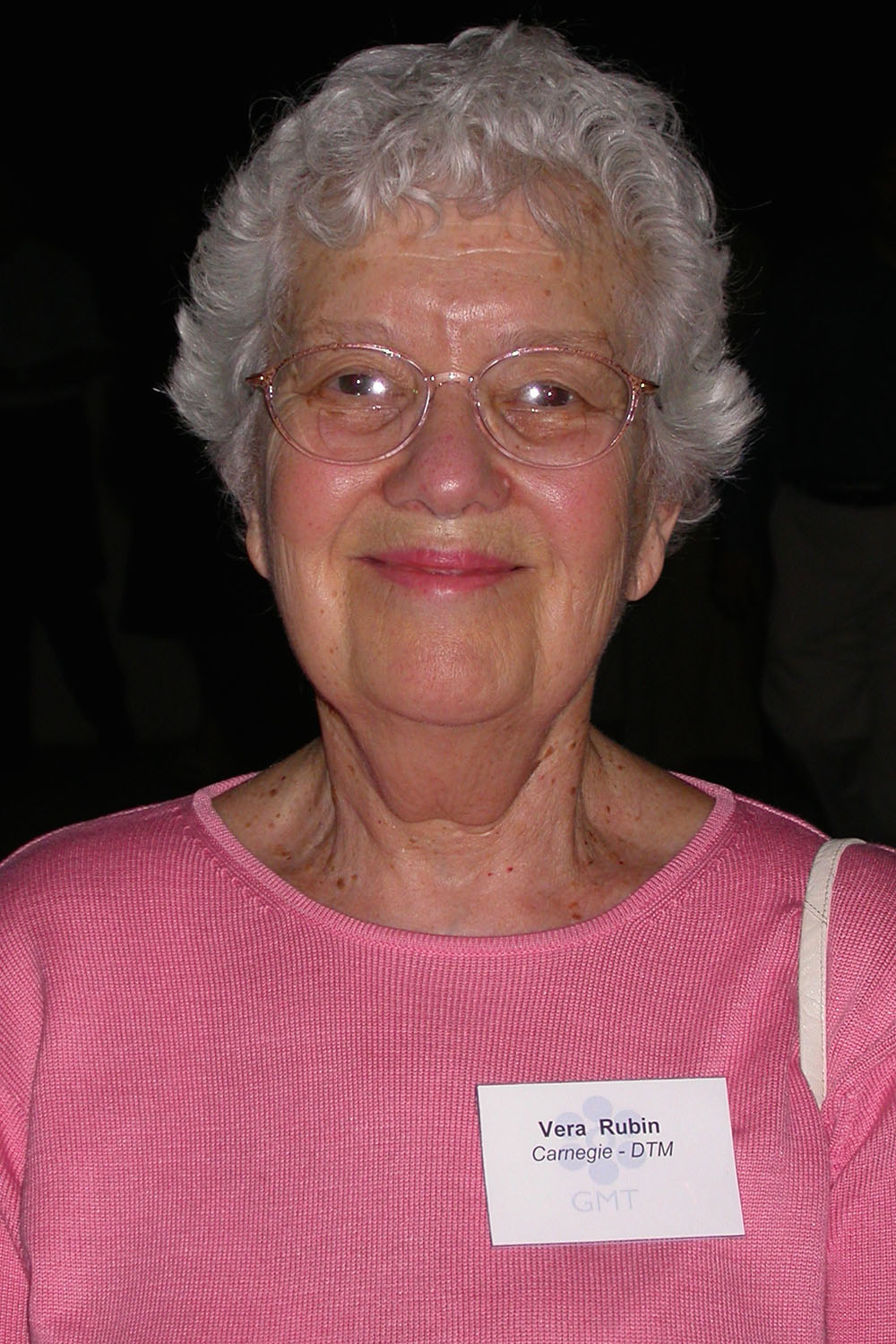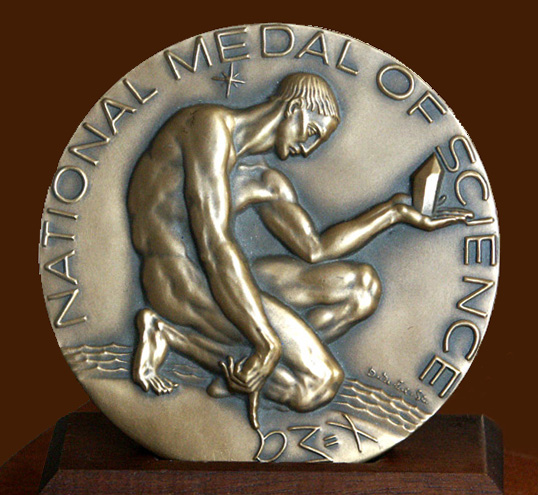|
Michael A. Stecker
|
|
Vera C. Rubin, Ph.D.
Vera Cooper Rubin studied
mathematics and astronomy at Vassar College After graduation she
and her physicist husband Bob Rubin attended Cornell University
where she received the M.A. degree. She then went on to become
the first doctoral candidate in astronomy at Georgetown
University. Then the mother of two children required her taking
night classes while her parents watched her 2 children and her
husband waited for her in the car. Vera taught and did research
at Georgetown for several years and had 2 more children. Then in
1965 she got a job working for the Department of Terrestrial
Magnetism, part of the Carnegie Institution of Washington where
she has remained to this day. She is best known for the study of
rotational speeds in galaxies which led to the theory of dark
matter which is ten times more numerous than the commonly
perceived matter that we can see and has been considered the only
existing matter until her monumental study.
"... and
yes, she is as pleasant, kind and thoughtful as the photograph
indicates."
|
|
|
|
National Medal of
Science |
|
|
|
The National Medal of Science is the nation’s highest scientific honor. Established by Congress in 1959, it was intended to be bestowed annually by the President of the United States on a select group of individuals deserving of special recognition by reason of their outstanding contributions to knowledge in the physical, biological, mathematical, or engineering sciences. In 1980 Congress expanded this recognition to include the social and behavioral sciences. The Committee of 12 scientists and engineers is appointed by the President to evaluate the nominees for the Award. Since its establishment, the National Medal of Science has been awarded to 409 distinguished scientists and engineers whose careers spanned decades of research and development. The recipients database from 1962 to the present can be searched at http://www.nsf.gov/nsb/awards/nms/recipients.cfm . To date only three women have won the award in the physical sciences. |
|
|
|
|

